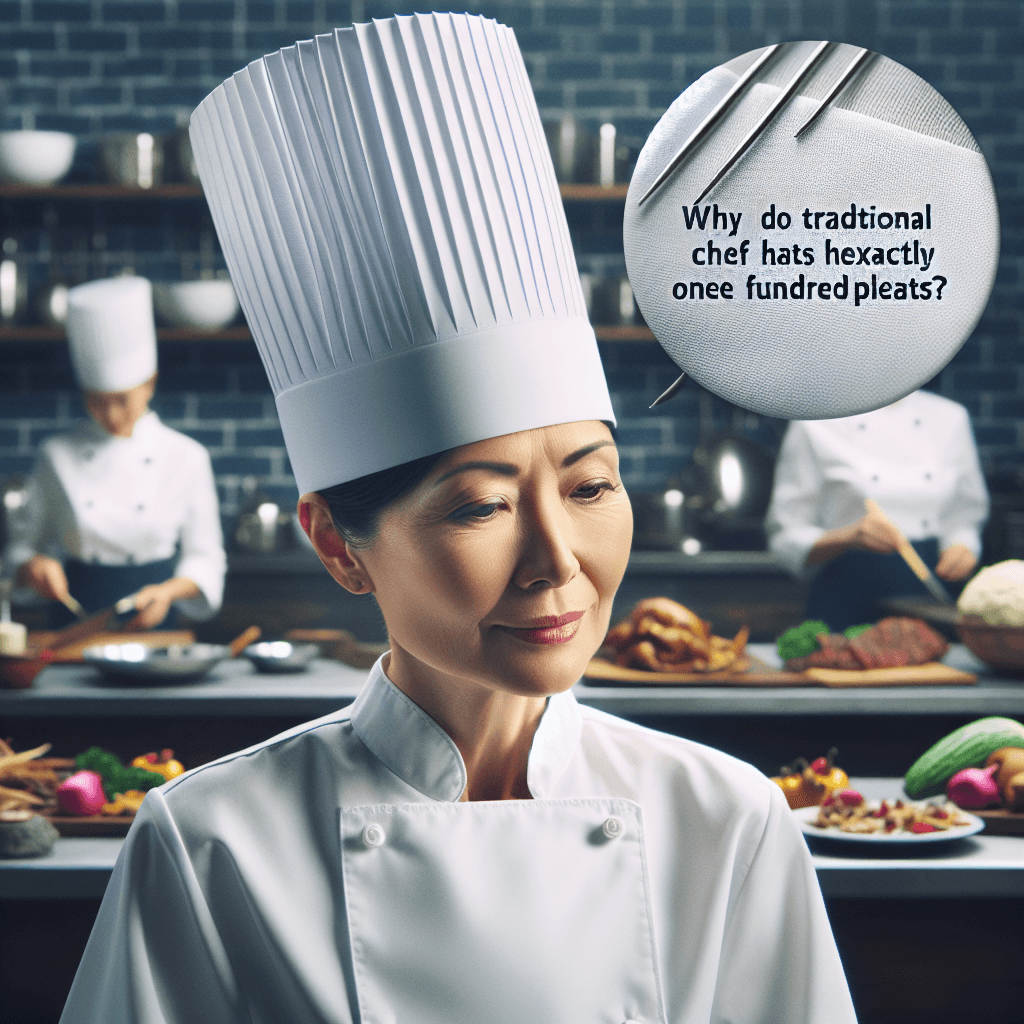Why do traditional chef hats have exactly one hundred pleats
Those 100 iconic folds aren't just for show—they're a legendary badge of honor, said to represent the hundred ways a true master chef can prepare a single egg.


Too Long; Didn't Read
The 100 pleats on a traditional chef hat are said to symbolize a chef's mastery, representing the 100 ways they know how to cook an egg.
The Culinary Crown: Why Do Traditional Chef Hats Have Exactly One Hundred Pleats?
Have you ever looked at the iconic, towering white hat worn by a professional chef and wondered about its unique design? Beyond its striking appearance, the traditional chef's hat, or toque blanche, is a garment rich with history and symbolism. One of its most specific and fascinating details is its folds. The long-held tradition states that a proper chef's toque should have exactly one hundred pleats. This isn't just a random stylistic choice; it's a powerful symbol of a chef's expertise and experience. This post will unfold the history and meaning behind this culinary custom, exploring why these one hundred pleats have been a badge of honor in kitchens for centuries.
A Hat Born from Hygiene and Hierarchy
Before diving into the pleats, it's essential to understand the origin of the hat itself. The modern chef's uniform is largely credited to the pioneering 19th-century French chef, Marie-Antoine Carême. Seeking to bring a sense of professionalism and cleanliness to the often-chaotic kitchens of the time, Carême advocated for a standardized uniform. He chose the color white because it easily shows dirt, signifying a commitment to hygiene—a clean uniform meant a clean kitchen.
The hat's design served a dual purpose:
- Practicality: It kept hair from falling into food and absorbed sweat from the chef's brow.
- Status: Carême introduced different heights for the hats to represent rank within the kitchen. The head chef, or Chef de Cuisine, wore the tallest toque, establishing a clear visual hierarchy. This system was later formalized by another culinary legend, Auguste Escoffier, who established the modern kitchen brigade system.
The 100-Pleat Symbol of Mastery
The most widely accepted reason for the one hundred pleats is a beautiful piece of culinary symbolism. Legend holds that the pleats represent the number of ways a master chef knows how to prepare an egg. In the 19th century, the ability to cook an egg in a multitude of ways—from poaching and frying to soufflés and complex sauces like hollandaise—was considered a fundamental measure of a chef's skill and versatility.
Therefore, a chef wearing a hat with one hundred pleats was making a bold statement. It declared that they had mastered at least one hundred distinct techniques, with the egg serving as the ultimate test of their culinary prowess. It was a visual resume, instantly communicating a chef's experience and dedication to their craft to both their colleagues and their patrons. While a young apprentice might wear a flatter, less pleated hat, the towering, fully pleated toque was reserved for the seasoned professional.
Tradition Meets the Modern Kitchen
Is every chef's hat today made with precisely one hundred pleats? Not necessarily. The tradition is more symbolic than a strict manufacturing requirement in the modern era. Many contemporary chefs have opted for more practical headwear, such as skull caps, bandanas, or beanies.
However, the classic toque blanche remains a powerful and enduring symbol of the culinary arts. You will still see it worn with pride in fine dining establishments, culinary schools, and cooking competitions around the world. Even modern, disposable paper versions of the hat often feature numerous pleats as a nod to this time-honored tradition. The one hundred pleats serve as a historical anchor, connecting today's culinary professionals to the masters who came before them.
Conclusion
The traditional chef's hat is far more than just a piece of a uniform; it's a story woven into fabric. The one hundred pleats are not an arbitrary design element but a deliberate symbol representing a chef's depth of knowledge and technical skill, famously benchmarked by their ability to prepare an egg in one hundred different ways. While kitchen attire continues to evolve, the legacy of the pleated toque endures as a tribute to the discipline, artistry, and rich history of the culinary profession. The next time you see a chef's hat, you’ll know it represents more than just a position—it represents a mastery of craft, told one pleat at a time.


